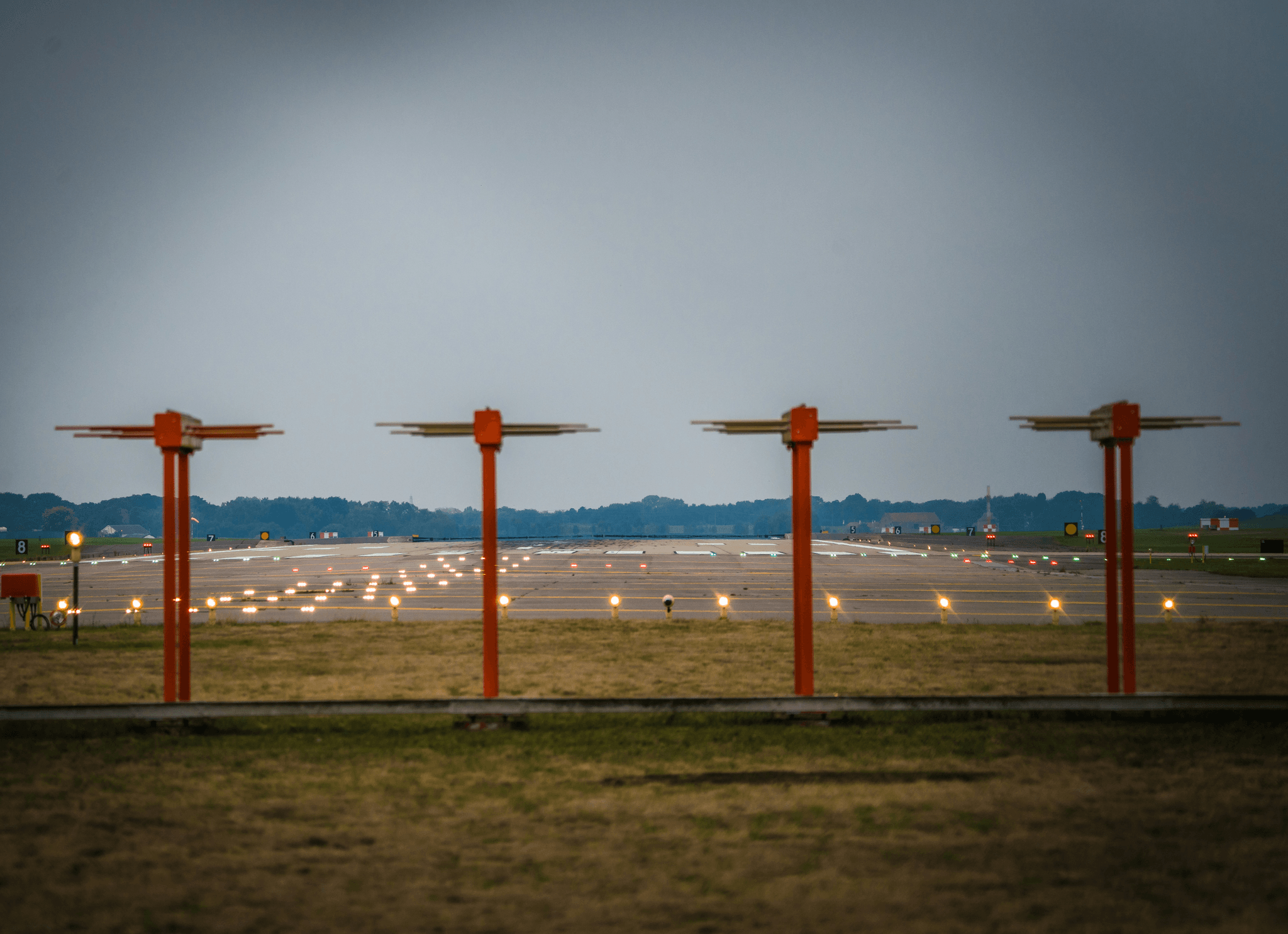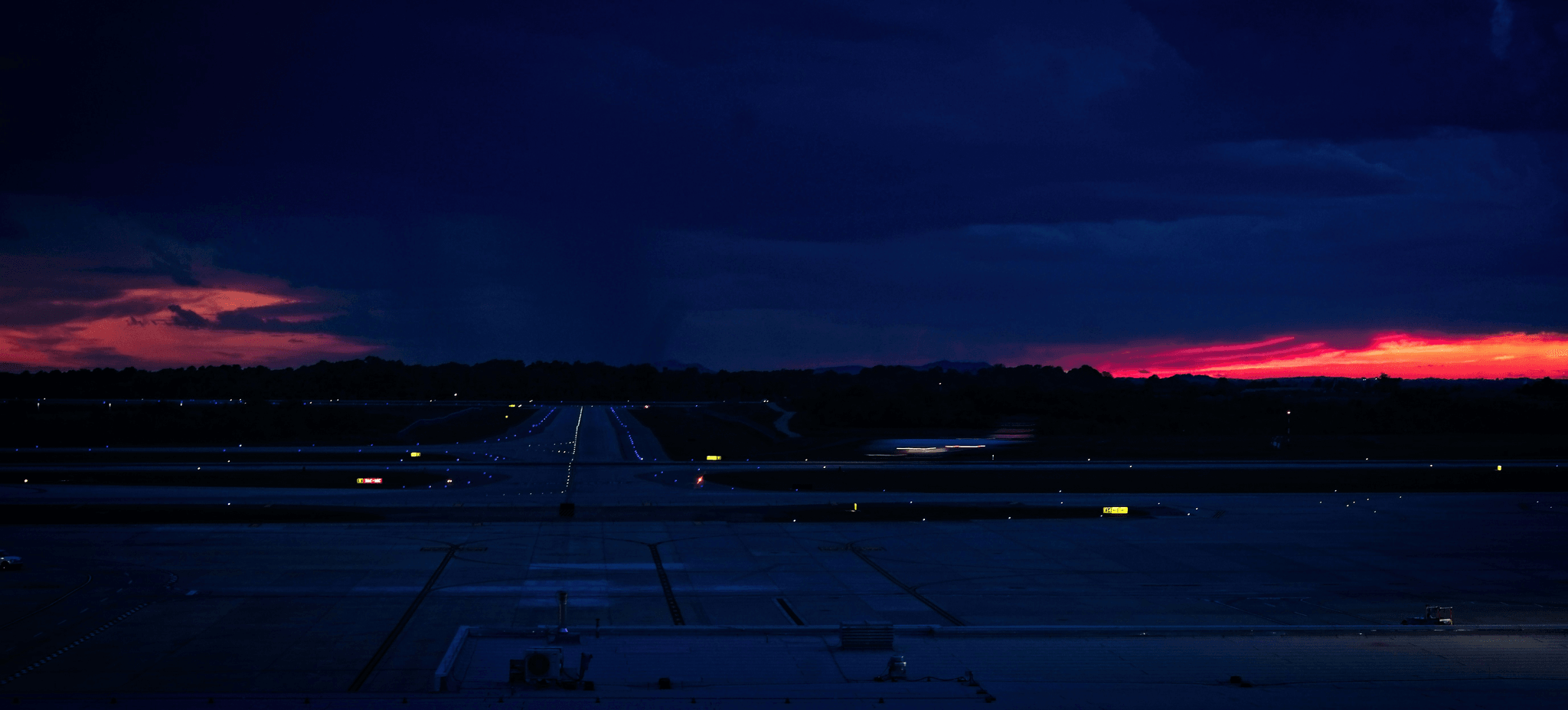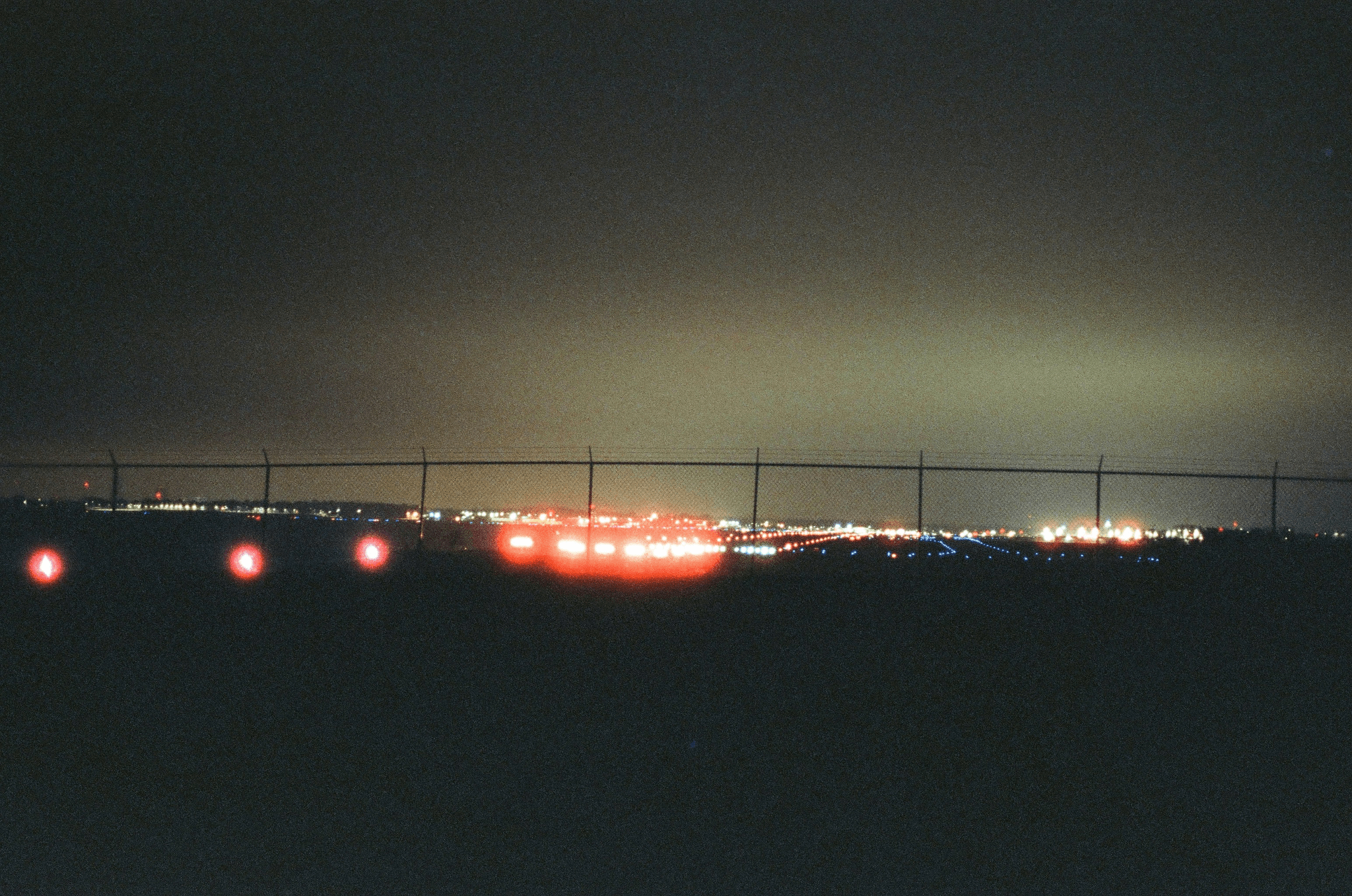Introduction

When it comes to aviation safety, runway intersection lights play a crucial role in guiding aircraft on the ground. These essential components of an airport lighting system ensure safe operations by signaling the status of runways and taxiways. Understanding the importance and key features of runway intersection lights is vital for pilots, air traffic controllers, and airport personnel.
Understanding Runway Intersection Lights
Runway intersection lights are a key part of an airport's lighting system, providing visual cues to pilots during taxiing and takeoff. These aviation lights are designed to enhance visibility and aid in safe aircraft movement on the ground. Pilots rely on these lights for accurate navigation and situational awareness.
Runway intersection lights are strategically placed at points where runways intersect or where taxiways cross runways, providing essential visual guidance to pilots. These lights are especially crucial during low visibility conditions, such as fog or heavy rain, when pilots may have difficulty discerning the layout of the airport. By illuminating these critical points of intersection, runway intersection lights help pilots make informed decisions about their aircraft's movement on the ground, reducing the risk of potential collisions.
Importance of Runway Intersection Lights
The significance of runway intersection lights cannot be overstated, as they contribute to the overall safety of airfield operations. Properly functioning runway status lights (RWSL) help prevent runway incursions and provide pilots with critical information about runway availability and status. The Runway Status Lights Pilot Reference Guide is a valuable resource for understanding the importance of these lights.
Runway intersection lights also play a crucial role in reducing the likelihood of runway incursions, which can have serious safety implications. By clearly indicating the status of a runway, these lights help pilots make informed decisions about their approach and landing, ultimately enhancing the overall safety of airfield operations. Additionally, the visibility provided by properly functioning runway status lights is essential during low-visibility conditions, allowing pilots to navigate the airfield with confidence.
Key Features of Runway Intersection Lights
One essential aspect of maintaining effective runway intersection lights is to measure light intensity regularly. This ensures that the lights meet established standards for visibility and performance. Haisen's Light Intensity Tester is a cutting-edge tool used for this purpose, allowing airports to maintain compliance with regulations while enhancing safety.
Additionally, runway intersection lights should be equipped with a self-monitoring system that alerts maintenance personnel when light intensity falls below acceptable levels. This proactive approach allows for timely adjustments and replacements, minimizing the risk of visibility issues for pilots. By integrating advanced technology into the monitoring process, airports can ensure consistent and reliable performance of their runway intersection lights.
Types of Runway Intersection Lights

Stop Bar Lights
Stop bar lights are a crucial component of runway intersection lights, providing visual cues to pilots and ground personnel to prevent runway incursions. These bright, red in-ground lights are typically installed at the holding position on a taxiway intersection with a runway. When illuminated, they indicate that the runway ahead is not safe for crossing, ensuring the safety of aircraft and personnel.
Runway guard lights, on the other hand, are designed to provide visual cues to pilots and ground personnel about the entrance to a runway. These lights are typically installed at the holding position on a taxiway where it intersects with a runway. When illuminated, they indicate that the runway ahead is not safe for crossing, ensuring that aircraft and personnel remain safe from potential collisions or accidents. By working in conjunction with stop bar lights, runway guard lights play a critical role in maintaining safety and preventing runway incursions.
Runway Guard Lights
Runway guard lights (RWGL) are another essential type of runway intersection light that enhances safety during ground movements at airports. These elevated, in-pavement lights are installed at the holding position on a taxiway intersection with a runway. When illuminated, they signify that the intersecting runway is active or about to become active, providing a clear visual warning to pilots and preventing any potential conflicts.
Runway guard lights are a crucial component of airport ground safety, ensuring that pilots are aware of active or soon-to-be-active runways. By providing a visual warning at taxiway intersections, these in-pavement lights help prevent potential conflicts and promote smoother ground movements. Pilots can rely on runway guard lights to make informed decisions about their taxiing route, ultimately enhancing overall airport safety and efficiency.
Taxiway Centerline Lights
Taxiway centerline lights are an integral part of the airport lighting system and play a vital role in guiding aircraft during taxiing operations. These blue in-pavement lights outline the centerline of taxiways, providing clear visual guidance to pilots as they navigate between runways and terminals. By maintaining proper alignment with these lights, pilots can ensure safe and efficient movement on the ground.
Additionally, taxiway centerline lights are designed to enhance visibility during low-visibility conditions such as fog, rain, or snow. The blue color of these lights helps pilots distinguish them from other airport lighting and runway edge lights, ensuring they stay on the correct path. This increased visibility reduces the risk of runway incursions and collisions, making taxiway centerline lights a critical safety feature for airports around the world.
Functionality of Runway Intersection Lights

Runway intersection lights play a crucial role in ensuring safe aircraft movement on the airfield. By providing clear visual cues to pilots, these lights help prevent runway incursions and potential collisions, enhancing overall safety during takeoff and landing operations.
Ensuring Safe Aircraft Movement
The use of runway status lights (RWSL) is essential for ensuring safe aircraft movement on the airfield. These lights provide pilots with real-time information about the status of a runway, allowing them to make informed decisions about their approach and departure procedures. By incorporating RWSL into their pilot reference guide, aviators can better navigate complex airport environments, reducing the risk of accidents.
Signaling Runway Status
Runway status lights also play a crucial role in guiding aircraft on taxiways. These lights help pilots navigate the airfield by indicating the correct path to follow and ensuring safe movement between runways, terminals, and other airport facilities. By providing clear visual cues, these lights contribute to efficient and organized taxi operations, reducing the risk of runway incursions and enhancing overall flight safety.
Guiding Aircraft on Taxiways
In addition to enhancing safety during takeoff and landing operations, runway intersection lights also play a key role in guiding aircraft along taxiways. These lights are strategically positioned to provide clear visual guidance to pilots as they navigate through complex airport layouts, ensuring smooth and efficient movement between runways and terminal areas. By utilizing different colors and patterns, runway intersection lights can convey specific instructions to pilots, such as where to turn or when to hold short of an active runway. This level of precision helps reduce the risk of runway incursions and ensures that aircraft can move swiftly and safely across the airport grounds.
Installation and Maintenance of Runway Intersection Lights

Proper Placement for Maximum Effectiveness
Proper placement of runway intersection lights is crucial for ensuring the safety and efficiency of airport operations. Runway status lights (RWSL) should be strategically positioned to provide clear visibility to pilots and air traffic controllers, especially during low visibility conditions. The Runway Status Lights Pilot Reference Guide outlines specific guidelines for the placement of these lights to maximize their effectiveness in signaling runway status.
Regular Inspections and Testing
Regular inspections and testing are essential components of maintaining the functionality of runway intersection lights. Aviation authorities require airports to conduct routine checks to ensure that all lights are operational and meet specified intensity levels. These inspections help identify any malfunctions or deficiencies in the airport lighting system, allowing for prompt repairs or replacements as needed.
Haisen's Light Intensity Tester
Haisen's Light Intensity Tester is a cutting-edge device designed to measure light intensity accurately and efficiently. This innovative tool provides airport maintenance personnel with a reliable method for evaluating the brightness of runway intersection lights, ensuring compliance with regulatory standards. By utilizing Haisen's Light Intensity Tester, airports can uphold the highest level of safety and reliability in their aviation light systems.
Compliance and Regulations for Runway Intersection Lights

Runway intersection lights are a critical component of any airport lighting system, and as such, they must adhere to strict compliance and regulations to ensure safe operations. The International Civil Aviation Organization (ICAO) Annex 14 Standards outline the specific requirements for the design and installation of runway intersection lights to guarantee visibility and functionality for pilots and ground personnel.
ICAO Annex 14 Standards
According to the ICAO Annex 14 Standards, runway intersection lights must meet specific photometric requirements to ensure adequate visibility under various weather conditions. These standards also dictate the proper placement of runway status lights (rwsl) to provide accurate guidance on runway status, enabling pilots to make informed decisions during taxiing and takeoff.
FAA Requirements
The Federal Aviation Administration (FAA) has established rigorous requirements for the installation and maintenance of runway intersection lights at airports within the United States. The FAA's Runway Status Lights Pilot Reference Guide provides detailed guidelines for airport operators on implementing effective runway status lights systems, emphasizing the importance of ensuring proper functionality at all times.
International Airfield Lighting Guidelines
In addition to ICAO and FAA regulations, international airfield lighting guidelines offer further insights into best practices for runway intersection lights. These guidelines encompass a broad range of considerations, from light intensity measurements to environmental factors that may impact aviation light visibility, serving as a comprehensive resource for airport authorities worldwide.
By adhering to these compliance and regulations for runway intersection lights, airports can uphold the highest standards of safety and operational efficiency in aviation. It is essential for airport authorities to stay abreast of evolving regulatory frameworks while leveraging innovative solutions such as Haisen's Light Intensity Tester to measure light intensity accurately and maintain optimal performance across their lighting systems.
Conclusion

As we wrap up our discussion on runway intersection lights, it's clear that these aviation lights play a crucial role in ensuring safe operations at airports. With the advancement in technology, the future of runway intersection light technology looks promising, with more efficient and reliable systems on the horizon. And when it comes to measuring light intensity for compliance and safety, Haisen's Light Intensity Tester emerges as the ultimate solution.
Ensuring Safe Operations with Runway Intersection Lights
With the implementation of runway status lights (rwsl) and other airport lighting systems, pilots can easily reference the Runway Status Lights Pilot Reference Guide to determine the status of a runway at any given time. This enhances situational awareness and helps prevent potential runway incursions, ultimately contributing to safer operations at airports.
Furthermore, with the advancement of technology, runway intersection lights are becoming more sophisticated and efficient. New systems are being developed to provide real-time information to pilots, allowing them to make quick and informed decisions while on the ground. These advancements in runway intersection light technology are crucial for ensuring safe operations and reducing the risk of runway incursions, ultimately enhancing overall airport safety.
The Future of Runway Intersection Light Technology
As technology continues to evolve, we can expect to see more innovative solutions in the field of aviation lighting. From energy-efficient LED lights to advanced control systems, the future holds great promise for enhancing visibility and safety on airport runways and taxiways. One exciting development on the horizon is Haisen's Light Intensity Tester, which promises to revolutionize the way runway intersection lights are monitored and maintained. This cutting-edge technology will provide airports with a reliable and efficient tool for ensuring that runway lights are always operating at optimal levels, reducing the risk of visibility issues for pilots during takeoff and landing.
Haisen's Light Intensity Tester: The Ultimate Solution
When it comes to compliance and regulations for runway intersection lights, Haisen's Light Intensity Tester provides a reliable method for measuring light intensity and ensuring that airport lighting systems meet industry standards. This tool is essential for maintaining safe and efficient operations at airports worldwide.
Furthermore, Haisen's Light Intensity Tester offers a user-friendly interface, making it easy for airport personnel to conduct regular inspections and maintenance of runway intersection lights. With its accurate measurements and instant results, this tool saves time and resources, allowing airports to operate smoothly without interruptions or delays. By investing in Haisen's Light Intensity Tester, airports can demonstrate their commitment to safety and compliance while enhancing their overall efficiency.
